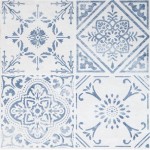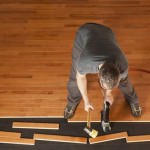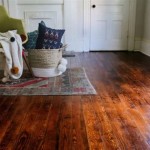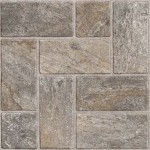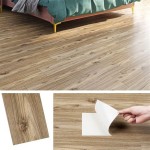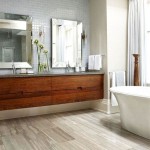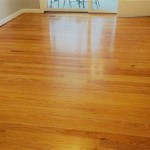Laminate Flooring In Kitchen: Pros and Cons
Laminate flooring has emerged as a popular choice for homeowners undertaking kitchen renovations or new builds. Its appeal stems from its affordability, aesthetic versatility, and ease of installation when compared to other flooring options such as hardwood, tile, or stone. However, selecting the right flooring for a kitchen requires careful consideration of its specific properties and how well they align with the demands of a high-traffic, moisture-prone environment. This article examines the advantages and disadvantages of using laminate flooring in the kitchen, providing a comprehensive overview to assist in making an informed decision.
Cost-Effectiveness and Installation Advantages
One of the primary drivers behind the popularity of laminate flooring is its cost-effectiveness. Compared to hardwood, engineered wood, tile, and natural stone, laminate offers a significantly lower initial investment. The cost per square foot for laminate flooring materials is typically less expensive, and the savings extend to installation as well. Many homeowners can install laminate flooring themselves, further reducing expenses. This DIY-friendly aspect is due to the interlocking planks or tiles that require no nails, glue, or grout.
The installation process is relatively straightforward. Laminate flooring is designed to float above the subfloor, usually with a thin foam underlayment providing cushioning and noise reduction. The interlocking system, often referred to as a "click-lock" system, allows for quick and easy assembly. This method minimizes the need for specialized tools or professional expertise, making it an attractive option for budget-conscious homeowners and those with basic DIY skills.
Furthermore, the reduced installation time translates to less disruption to the household. Unlike tile or hardwood installations that can require multiple days of preparation, setting, and curing, a laminate floor can often be installed within a single day, depending on the size of the kitchen. This expedited process minimizes inconvenience and allows for a quicker return to normal kitchen activities.
Durability, Maintenance, and Cleaning
Laminate flooring is constructed from multiple layers, typically including a high-density fiberboard (HDF) core, a decorative photographic layer, and a transparent wear layer. The wear layer is crucial for protecting the floor from scratches, stains, and fading. The durability of laminate flooring is rated using an Abrasion Class (AC) rating, which ranges from AC1 to AC5, with higher numbers indicating greater resistance to wear and tear. For kitchens, an AC3 or AC4 rating is generally recommended to withstand the higher levels of foot traffic and potential spills.
The maintenance requirements for laminate flooring are relatively minimal. Regular sweeping or vacuuming is sufficient to remove loose dirt and debris. For spills and messes, a damp mop or cloth is typically all that is needed. It is crucial to avoid using excessive water, as moisture can seep into the seams between the planks and potentially damage the HDF core. Using a specialized laminate floor cleaner, which is pH-neutral and designed not to leave a residue, can further enhance the longevity and appearance of the floor.
Certain laminate flooring products are specifically designed with enhanced moisture resistance, featuring tighter seams and water-resistant core materials. While not entirely waterproof, these options offer better protection against spills and splashes commonly encountered in a kitchen environment. Properly sealing the edges of the laminate floor with a waterproof sealant, particularly around sinks, dishwashers, and refrigerators, can further mitigate the risk of water damage.
Aesthetic Versatility and Design Options
Laminate flooring excels in its ability to mimic the appearance of various natural materials, including hardwood, tile, and stone. The high-resolution photographic layer allows for realistic replication of wood grain patterns, tile textures, and stone variations. This versatility provides homeowners with a wide range of design options to complement their kitchen décor.
Laminate flooring is available in a multitude of colors, styles, and plank sizes, enabling the creation of diverse aesthetic effects. From light and airy Scandinavian-inspired designs to rich and traditional wood looks, laminate can be tailored to suit individual preferences and architectural styles. Embossed textures can further enhance the realism, adding depth and dimension to the flooring surface.
Furthermore, laminate flooring offers flexibility in terms of installation patterns. Planks can be laid in a traditional straight pattern or in more intricate arrangements such as herringbone or chevron. Different plank widths can also be combined to create a custom look. The combination of aesthetic versatility and installation options allows for a high degree of personalization, enabling homeowners to achieve the desired visual impact in their kitchens.
Water Resistance Limitations and Vulnerability to Damage
Despite advancements in moisture-resistant laminate flooring, it is important to acknowledge its inherent limitations in wet environments. Unlike porcelain tile, which is completely waterproof, laminate flooring is susceptible to water damage if exposed to prolonged moisture. The HDF core is absorbent and can swell or warp if water penetrates the seams between the planks. This swelling can lead to unsightly bubbling, buckling, and eventual degradation of the floor.
Even water-resistant laminate flooring is not immune to damage from flooding or standing water. If a major spill occurs, it is crucial to clean it up immediately and thoroughly dry the affected area. Neglecting to address spills promptly can result in water seeping into the seams and causing irreversible damage. In high-moisture areas such as around the sink and dishwasher, extra precautions should be taken to seal the edges and prevent water from accumulating.
Beyond water damage, laminate flooring is also vulnerable to scratches and dents, although improvements in wear layer technology have enhanced its resistance. Sharp objects, dropped items, and abrasive cleaning products can all potentially damage the surface. While minor scratches can often be concealed with touch-up kits, deeper gouges or dents may require replacing individual planks or sections of the floor.
Sound and Comfort Considerations
Laminate flooring can sometimes produce a hollow or echoing sound when walked upon, particularly in rooms with minimal furniture or soft furnishings. This noise can be mitigated by installing a high-quality underlayment that provides sound absorption. Thicker underlayments with soundproofing properties can significantly reduce the transmission of noise and enhance the overall comfort of the floor.
Another aspect to consider is the relative hardness of laminate flooring compared to softer materials such as carpet or vinyl. While the hardness contributes to its durability, it can also make it less comfortable to stand on for extended periods. Using cushioned mats or rugs in areas where prolonged standing is common, such as in front of the sink or stove, can alleviate discomfort and provide additional support.
Certain laminate flooring products are designed with textured surfaces that provide enhanced slip resistance. This is particularly important in kitchens, where spills and moisture can increase the risk of slipping. Selecting a laminate floor with a higher slip resistance rating can improve safety and reduce the likelihood of accidents.
Repair and Replacement Challenges
While laminate flooring is relatively easy to install, repairing or replacing damaged sections can present challenges. If a plank is severely damaged, it must be removed and replaced with a new one. The process of removing a damaged plank can be difficult, particularly if it is located in the middle of the floor. Specialized tools may be required to carefully detach the plank without damaging surrounding planks.
Matching the replacement plank to the existing floor can also be problematic. Over time, the color and pattern of laminate flooring can fade due to exposure to sunlight and wear. Finding a replacement plank that perfectly matches the existing floor may require sourcing it from the original manufacturer or distributor. If the original flooring is discontinued, it may be necessary to replace a larger section of the floor to ensure a consistent appearance.
Unlike hardwood flooring, which can be sanded and refinished to restore its appearance, laminate flooring cannot be refinished. Once the wear layer is damaged, the floor cannot be restored to its original condition. In cases of extensive damage or wear, the only option is to replace the entire floor.

Pros And Cons Of 5 Popular Kitchen Flooring Materials

Laminate Flooring Pros And Cons Direct Wood

Vinyl Vs Laminate Flooring Cost Pros Cons And More Lx Hausys

Engineered Wood Floors In Kitchen Pros And Cons Beyond Blog

Pros Cons Of Kitchen Flooring Options Elite Living Construction

Wood Vs Laminate The Pros And Cons

Vinyl Vs Laminate Flooring Pros Cons And Differences Forbes Home

Tile Flooring Vs Laminate Compare Major Differences And Costs Forbes Home

What Are The Pros And Cons Of Wood Flooring In Kitchen Singapore Laminate

Upgrading Your Floors The Pros And Cons Of 5 Popular Flooring Choices

